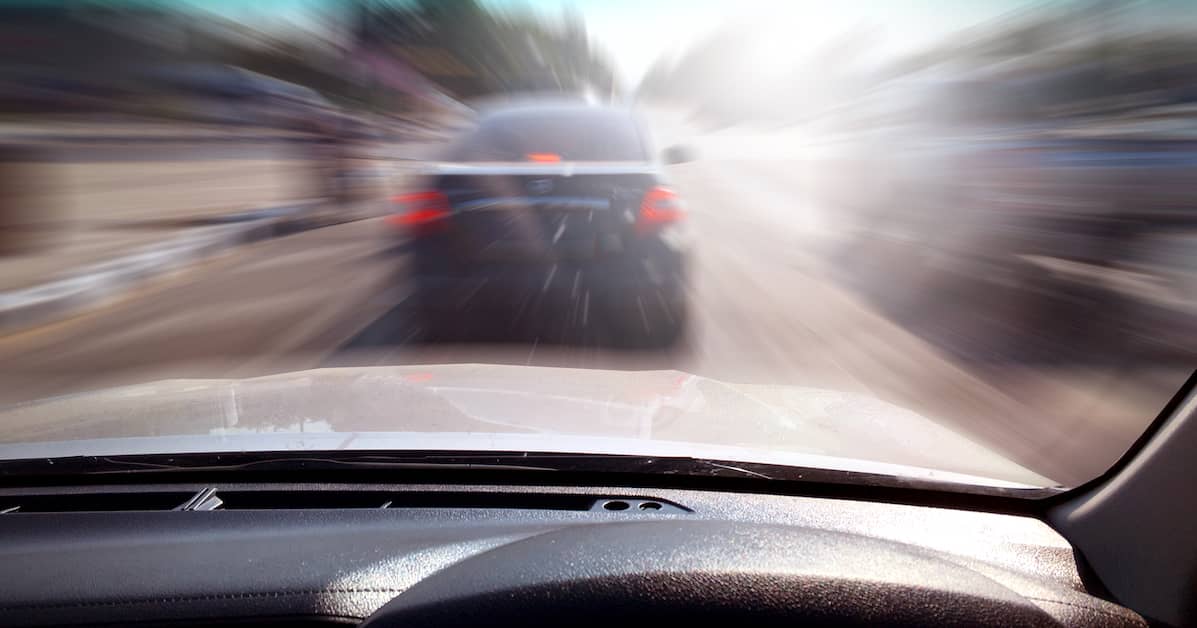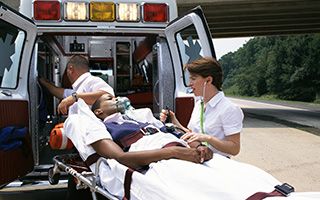
Being involved in a rear-end collision is a situation that no driver wants to experience. At Fuller & Fuller, our rear-end accident lawyer understands the physical and emotional trauma that these accidents can cause. We welcome the opportunity to meet with you, listen to your story, and help you understand your rights.
According to the National Safety Council, nearly 40% of all injury-causing auto accidents in the United States are rear-end collisions. Injuries common in these accidents include:
- Whiplash
- Traumatic Brain Injury/Concussions
- Spinal Cord Injury
- Chest and Abdominal Cavity Injury
- Soft Tissue Injury
- Broken Bones
- Internal Organ Damage
Many rear-end collision injuries can result in long-term or permanent consequences, including limited physical abilities, difficulties supporting yourself and your family, and the need for continuous medical assistance. When you did not cause the accident, you should not be responsible for these expenses. Experienced Olympia rear-end accident lawyer Marya Fuller is here to review your claim to help you understand its potential worth.
Call Fuller & Fuller at (800) 570-4878 to schedule a FREE case review today. We serve victims of rear-end accidents living in Tacoma, Olympia, and all nearby areas of Washington.
Tips for Avoiding a Rear-End Accident
While it is not always entirely possible to prevent car accidents, there are steps you can take to help avoid being involved in one. These include:
Maintaining a Safe Following Distance
- Follow the Three-Second Rule. Choose a landmark on the side of the road, like a sign or a tree. Count the time it takes for the back end of the car in front of you to pass this landmark, then count the seconds it takes for you to pass it next. If your count is less than three seconds, you’re too close. This distance is roughly the length of three cars.
- Increase Distance in Bad Weather. Extend your following distance to at least five seconds (five to six car lengths) in rain, snow, or fog to compensate for reduced visibility and road traction.
Staying Focused
- Avoid Distractions. Put your phone away, adjust your mirrors and settings before you drive, and ask passengers to help you with navigation, if needed
- Watch the Road. Always look ahead to see what the traffic is like and be prepared for sudden stops or changes.
Adjusting Your Driving to Traffic and Road Conditions
- Slow Down in Congested Areas. When traffic is heavy, reduce your speed and increase your following distance.
- Be Mindful of Road Conditions. Adjust your speed and following distance on wet, icy, or gravel roads.
Using Indicators and Signals
- Signal in Advance. Always use your turn signals well before you make a turn or lane change.
- Brake Smoothly. Instead of abrupt braking, aim for a gradual slow down to let the driver behind you adjust their speed accordingly.
Staying Aware of Surroundings
- Check Your Mirrors. Frequently check your rearview and side mirrors to assess the distance and speed of cars behind you.
- Keep an Escape Route. Always know where you can move your vehicle in case the car behind you isn’t stopping in time.
Driving Defensively, Not Aggressively
- Yield When Necessary. If someone is tailgating you, move to another lane if it’s safe, or pull over to let them pass.
- Maintain a Steady Speed. Try to maintain a constant speed to avoid confusing drivers behind you, making it easier for them to maintain a safe following distance.
Driving defensively can help you react in time to avoid being involved in a rear-end collision. However, even the safest of drivers cannot always avoid an accident. When you are injured by someone else’s recklessness or carelessness, our rear-end collision lawyer is here to help. Reach out today for an obligation-free case review.
Understanding the Risks
One of the best ways to prevent a rear-end collision is to pay attention. Distracted driving remains a leading cause of these accidents.
There are three types of distraction:
- Manual. Anything that takes your hands off the steering wheel.
- Visual. Anything that takes your eyes off of the road and surrounding vehicles.
- Cognitive. Anything that takes your mind away from the task of driving.
Commonly, when we talk about distracted driving, the conversation starts and ends with cell phones. However, while cell phones are a primary cause of distraction, they are far from the only—or even the worst—risk.
Distracted driving includes literally anything that takes your eyes, hands, or attention away from the task of driving. This includes eating and drinking, looking at billboards or scenery, adjusting the radio or music, and grooming yourself (shaving, applying makeup, etc.) It also includes adjusting hands-free technology. Although touted as a safe alternative to handheld devices, studies have shown that hands-free options are not always safer.
In addition to distracted driving, some of the most common causes of rear-end collisions are:
- Tailgating. Tailgating reduces the time available to react if the vehicle in front comes to a sudden stop or slows down unexpectedly. Maintaining a safe following distance is crucial for giving drivers adequate time to respond to unforeseen events.
- Speeding. Moving faster than is safe reduces reaction time, increases needed stopping distance, and compromises vehicular control. Following the flow of traffic—while operating within the speed limit—can reduce these risks.
- Wet or Icy Road Conditions. Poor road conditions due to weather are a significant factor in many rear-end collisions in Washington. Wet or icy surfaces reduce a vehicle’s grip on the road and increase stopping distances. These conditions also make it easier for vehicles to skid, making it difficult for drivers to maintain control.
- Poor Visibility. Fog, heavy rain, or dim lighting can severely reduce visibility on the road. When drivers can’t see well, they have less time to react to obstacles or changes in traffic flow, increasing the likelihood of a rear-end accident. Poor visibility is often compounded by other factors like speeding or distraction, making it a potent risk factor.
- Rapid Change in Traffic Speed. Highways and other fast-moving roads are particularly prone to rear-end accidents when there is a rapid change in traffic speed. For example, if a vehicle ahead suddenly brakes to exit the highway or because of a traffic jam, the vehicles behind may not have sufficient time to reduce their speed, leading to a collision.
When you are involved in a rear-end collision, determining its cause will be important for determining liability. Working with a specialist in accident and injury law helps to ensure all possible factors are investigated fully.
Washington Accident & Injury Law Specialist, Marya Fuller
Attorney Marya Fuller is a specialist in accident and injury law. She carefully and thoroughly investigates rear-end collisions to ensure all liable parties are identified and held to account.
A skilled negotiator, Attorney Fuller uses the information she uncovers during the investigative process to advocate for the best settlement possible, helping to ensure you receive the full compensation you are due. When negotiations fail, however, she is equally prepared to take cases to trial, arguing in front of a judge and jury to help ensure justice is served.
Compassionate, attentive, thorough, and effective, Attorney Fuller is here to listen, advise, and support you throughout the legal process. Her goal is to take the hassle out of the process for you.
For a complimentary case review in Tacoma or Olympia, contact Fuller & Fuller today. Our experienced rear-end accident lawyer serves DuPont, Shelton, Aberdeen, and all nearby areas of Washington State.






